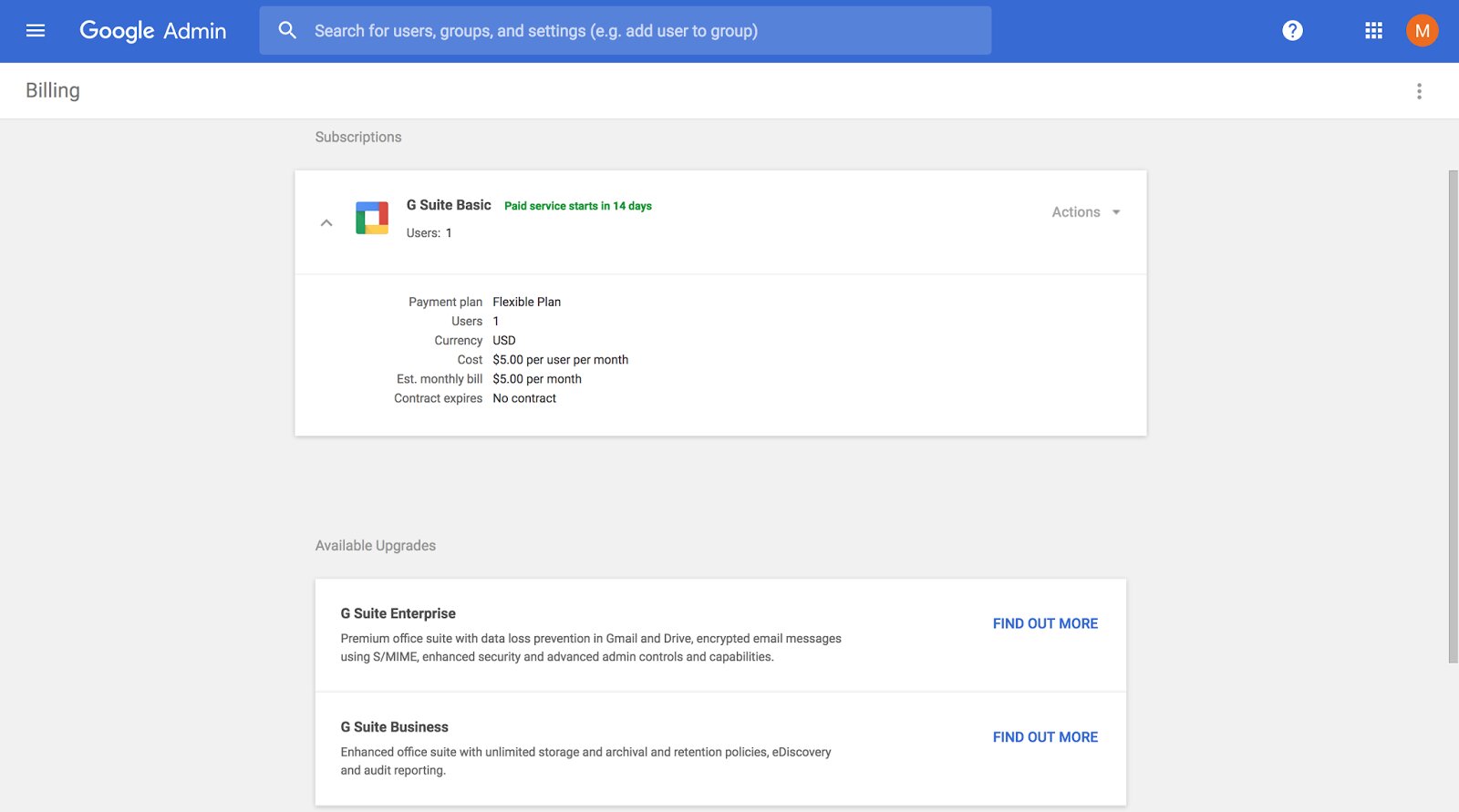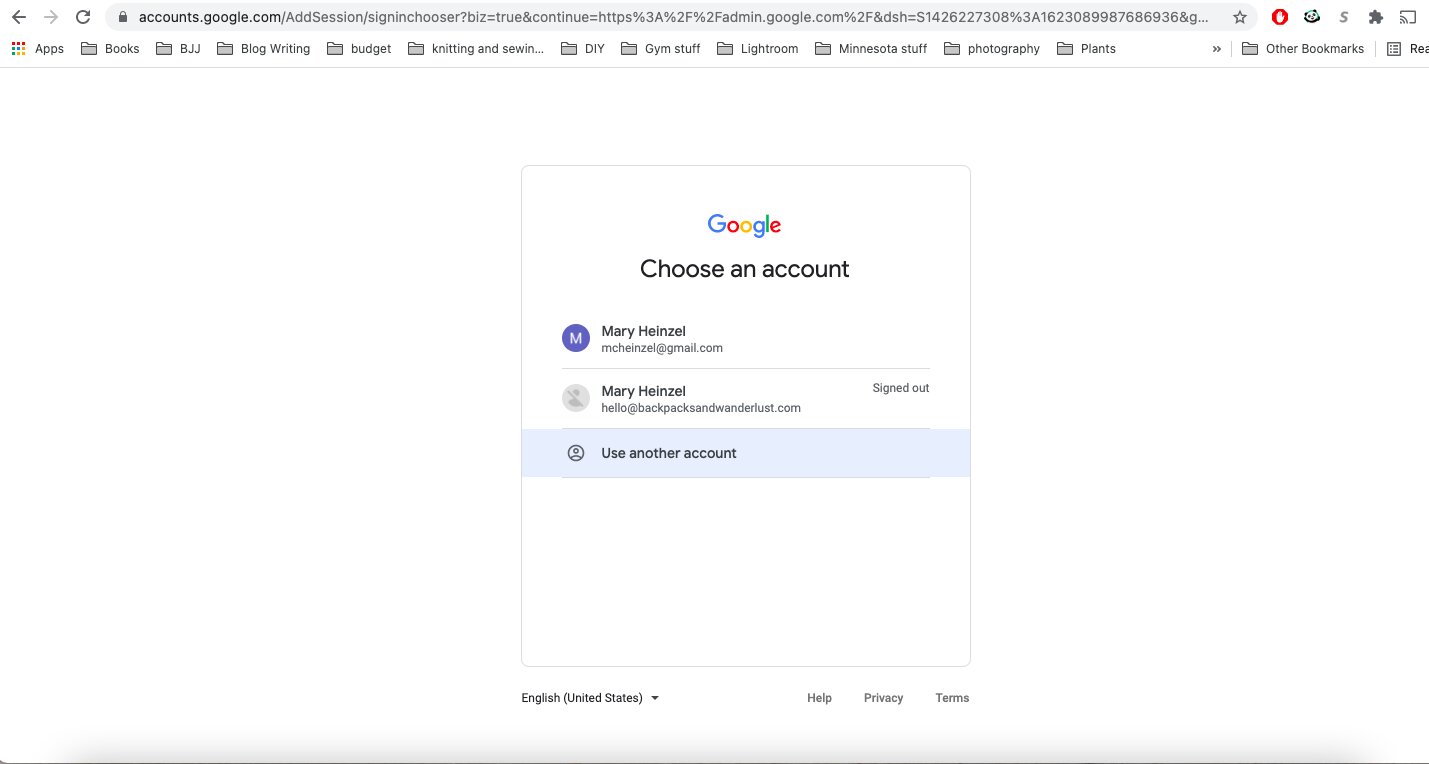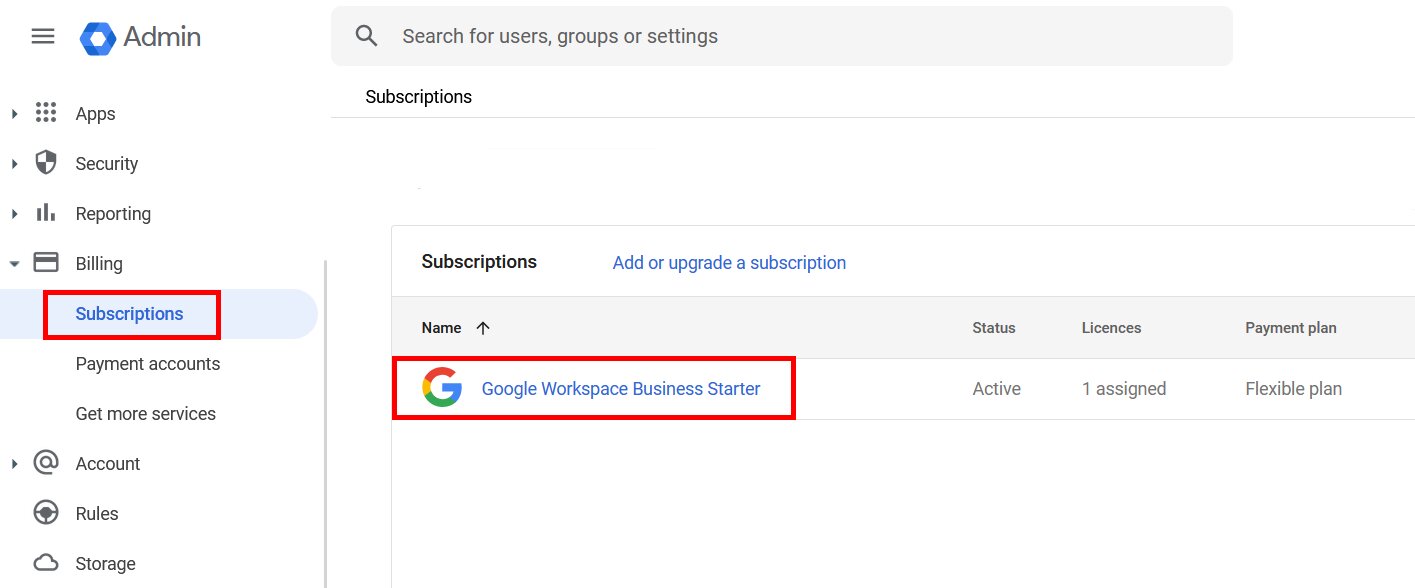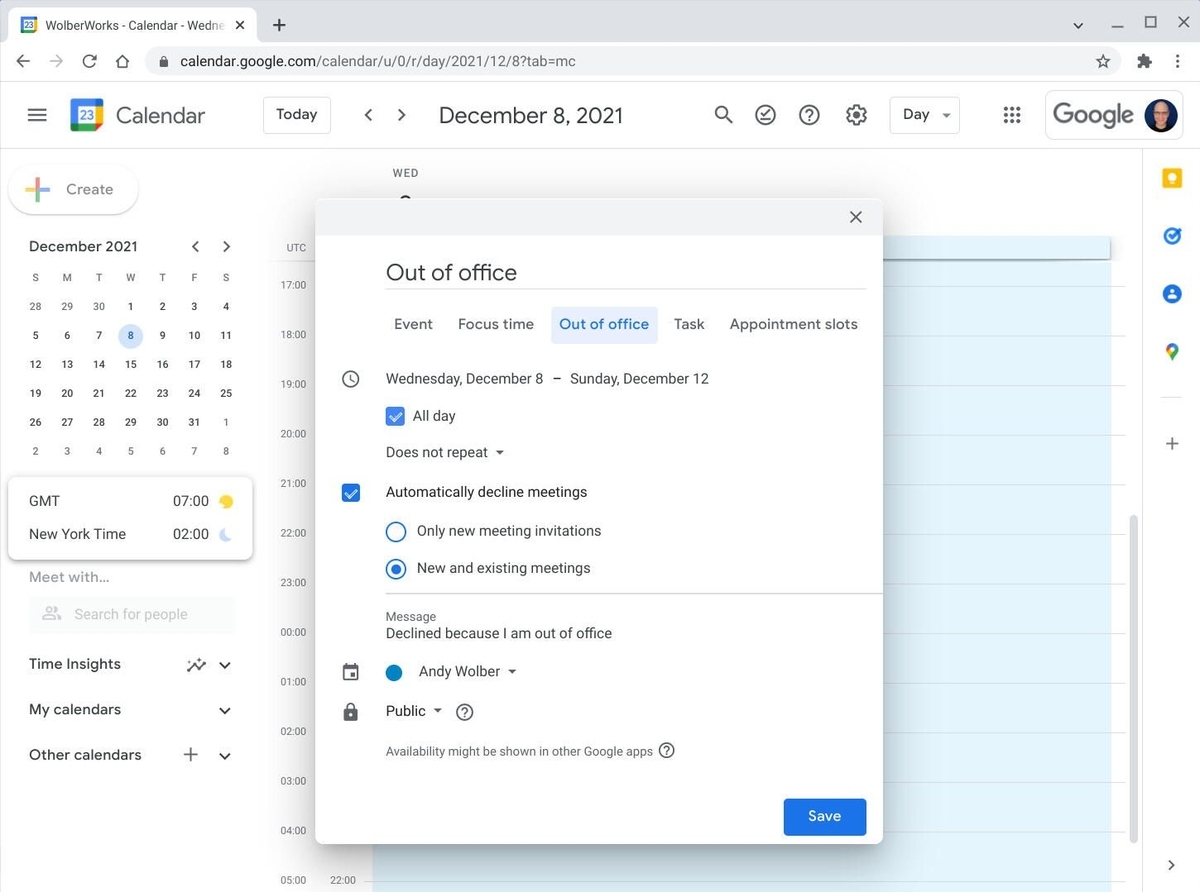Introduction
Deactivating Google Workspace can be a significant decision for any organization or business. Whether you’re transitioning to a different platform or shutting down operations, it’s crucial to follow the proper steps to ensure a smooth and seamless process. In this guide, we will walk you through the essential steps to deactivate Google Workspace and provide valuable insights to help you navigate the process successfully.
Google Workspace, formerly known as G Suite, is a powerful suite of productivity tools that encompasses various applications like Gmail, Google Drive, Google Docs, and more. It allows teams and organizations to collaborate effectively and manage their workloads efficiently. However, there may come a time when you need to deactivate your Google Workspace account for various reasons such as shifting to a different productivity suite, discontinuing operations, or consolidating resources.
Deactivating Google Workspace entails a series of steps to ensure a seamless transition and to preserve your data. It’s important to approach this process with caution and thoroughness to avoid any potential data loss or disruption to your operations. In the following sections, we will outline the key steps you need to take to deactivate your Google Workspace account successfully.
Please note that these steps are general guidelines and may vary depending on your specific situation and the size of your organization. It is always recommended to consult the official Google Workspace documentation or seek assistance from a qualified IT professional for assistance tailored to your needs. With that in mind, let’s dive into the process of deactivating Google Workspace.
Step 1: Understand what deactivating Google Workspace means
Before you proceed with deactivating Google Workspace, it’s essential to have a clear understanding of what this action entails. Deactivating Google Workspace means disabling the services and applications associated with your account. This includes Gmail, Google Drive, Google Docs, Google Calendar, and other Google Workspace applications.
Once you deactivate Google Workspace, your users will no longer have access to these services, and any data stored within them will become inaccessible. It’s crucial to evaluate the impact this action will have on your organization and determine if deactivating Google Workspace is the right decision for your specific needs.
Consider the following factors when deciding to deactivate Google Workspace:
- Alternative solutions: Explore alternative productivity suites or applications that can meet your organization’s requirements. This could involve migrating to another platform or adopting a different toolset to ensure a smooth transition.
- Data backup: Assess your data backup strategies and ensure you have a reliable method to preserve and secure your data. It’s essential to have a backup plan in place to prevent any potential loss of critical information during the deactivation process.
- Collaboration needs: Evaluate how your team or organization collaborates and consider the impact that deactivating Google Workspace may have on your workflow. Ensure that the alternative solution you choose adequately addresses your collaboration requirements.
- Communication and training: Plan how you will communicate the changes to your team or organization. Educate your users on any new tools or platforms they will be using and provide training resources to help them transition smoothly.
By considering these factors and understanding the implications of deactivating Google Workspace, you can make an informed decision that aligns with your organization’s goals and needs. Proceeding with caution and thorough planning will ensure a smooth and successful transition as you deactivate Google Workspace.
Step 2: Back up your data
Prior to deactivating Google Workspace, it’s crucial to back up your data to ensure its accessibility and prevent any potential loss during the transition. Google provides various methods to export and download your data from each of the Google Workspace applications. Here are some key steps to follow when backing up your data:
- Identify critical data: Determine which data needs to be backed up, such as emails, documents, calendars, and any other important information stored within Google Workspace.
- Export data from Gmail: To export your Gmail messages, you can use the Google Takeout service. This allows you to download your emails in MBOX format, which can be imported into other email clients or archival systems.
- Save files from Google Drive: Download the files you want to retain from Google Drive. You can do this by selecting individual files or folders and choosing the “Download” option. Alternatively, you can use Google Takeout to export all your Drive data in a compressed format.
- Export documents and sheets: For Google Docs and Google Sheets, you can download them in various formats such as Microsoft Word or Excel, OpenDocument, or PDF. This allows you to have offline copies of your collaborative documents and spreadsheets.
- Export calendars: If you use Google Calendar, you can export your calendars in iCal format. This enables you to import them into other calendar applications or services.
- Consider third-party backup solutions: Depending on your organization’s needs, you may opt for third-party backup solutions that offer comprehensive data backup and recovery options. These solutions provide additional security and flexibility in managing your data backups.
By following these steps and ensuring that your critical data is backed up, you can have peace of mind during the deactivation process. Remember to keep backups in a secure location and verify the integrity of the data before you proceed to deactivate Google Workspace.
Step 3: Check your billing and subscription status
Before you deactivate Google Workspace, it is essential to review your billing and subscription status to ensure a smooth transition and avoid any unexpected charges. Follow these steps to check your billing and subscription details:
- Access your Google Workspace admin console: Log in to your Google Workspace admin console using your administrator credentials.
- Navigate to the billing section: Locate and click on the “Billing” or “Billing and subscriptions” section within the admin console. This will provide you with an overview of your billing information.
- Review your subscription details: Check your subscription details, including the plan you are currently on, the number of licenses or users, and the renewal date. This information is crucial for understanding the terms of your subscription and managing any outstanding payments.
- Cancellation policies: Review the cancellation policies for your Google Workspace subscription. Understand any notice periods or penalties associated with canceling your subscription to ensure a smooth transition without incurring unnecessary charges.
- Communicate with your billing contact: If you have any questions or concerns regarding your billing or subscription status, reach out to the designated billing contact or Google Workspace support for assistance. They can provide additional guidance and clarification on any billing-related queries you may have.
By checking your billing and subscription status, you can ensure that you are aware of any financial obligations and make informed decisions regarding the deactivation of your Google Workspace account. This step is crucial to avoid any unforeseen charges and to manage your budget effectively as you transition to alternative solutions.
Step 4: Inform your team or organization
When deactivating Google Workspace, it is essential to inform your team or organization about the upcoming changes. Proper communication ensures that everyone is aware of the transition and can adjust their workflows accordingly. Follow these steps to effectively communicate the deactivation of Google Workspace:
- Prepare an announcement: Craft a clear and concise announcement or email that explains the reasons for deactivating Google Workspace, the timeline for the transition, and any alternative solutions or tools that will be implemented. Make sure to highlight the benefits and advantages of the new solution to help ease the transition.
- Hold a team meeting or briefing: Schedule a meeting or virtual briefing to share the announcement and provide an opportunity for your team members to ask questions or seek clarification about the deactivation process. This will help alleviate any concerns they may have and foster a smooth transition.
- Provide training resources: Offer training resources, tutorials, or documentation to help your team members familiarize themselves with the alternative solution or tools that will replace Google Workspace. Ensure that they have access to the necessary training materials and support to adapt to the changes.
- Encourage feedback: Create an open and supportive environment for your team members to provide feedback or share any challenges they may encounter during the transition. This feedback can help you address any issues promptly and refine the implementation of the alternative solutions.
- Facilitate knowledge sharing: Encourage collaboration and knowledge sharing among team members by organizing workshops or collaborative sessions where individuals can share their expertise and best practices for using the new tools or platforms.
By informing your team or organization about the deactivation of Google Workspace, you ensure transparency and give them the opportunity to prepare for the upcoming changes. Effective communication and support during this transition will help minimize disruptions and facilitate a smoother adoption of the alternative solutions.
Step 5: Export your data from Google Workspace
Before deactivating Google Workspace, it is crucial to export your data from the various applications and services to ensure that you have offline backups and can easily migrate to alternative solutions. Follow these steps to export your data from Google Workspace:
- Emails and Contacts: Use the Google Takeout service to export your emails and contacts from Gmail. You can select the specific labels or date ranges to export, and the data will be downloaded in MBOX format.
- Files and Folders: Export your files and folders from Google Drive by selecting individual files or entire folders and choosing the “Download” option. Alternatively, you can use Google Takeout to export all your Google Drive data in a compressed format.
- Documents and Sheets: For Google Docs and Google Sheets, you can download them in various formats such as Microsoft Word or Excel, OpenDocument, or PDF. This allows you to have offline copies of your collaborative documents and spreadsheets.
- Calendars: Export your Google Calendar events by using the “Export” option within the calendar settings. You can choose the desired date range, and the events will be saved in iCal format, which can be imported into other calendar applications or services.
- Other Google Workspace data: Depending on your usage and needs, you may have other data stored within Google Workspace applications such as Google Sites, Google Tasks, or Google Keep. Ensure that you explore the export options for these services and export any relevant data before deactivating your account.
- Verify data integrity: Once you have exported your data from Google Workspace, it is crucial to verify the integrity of the exported files. Double-check that the files are accessible and can be opened using the appropriate applications or tools.
By exporting your data from Google Workspace, you ensure that you have offline copies of your important information. This allows for a smooth transition and easy integration into alternative solutions or platforms.
Step 6: Cancel your subscription
After backing up your data and preparing for the transition, it is time to cancel your Google Workspace subscription. Follow these steps to ensure a proper cancellation:
- Access your Google Workspace admin console: Log in to your Google Workspace admin console using your administrator credentials.
- Navigate to the billing section: Locate and click on the “Billing” or “Billing and subscriptions” section within the admin console.
- Cancel the subscription: Look for the option to cancel or disable your subscription. Follow the prompts and provide any required information to confirm the cancellation.
- Review cancellation policies: Take a moment to review the cancellation policies and any notice periods specified in your subscription agreement. Ensure that you comply with the terms to avoid any additional charges or penalties.
- Confirm cancellation: Review the cancellation confirmation and ensure that your subscription has been successfully canceled. Take note of any relevant information such as the effective cancellation date or any remaining billing cycles.
- Communicate the cancellation: Notify your team or organization about the cancellation of the Google Workspace subscription, reiterating the reasons behind the decision and providing any necessary instructions for the transition to alternative solutions.
It is essential to be mindful of any contractual obligations, notice periods, or penalties associated with canceling your Google Workspace subscription. By following the proper cancellation steps and communicating the cancellation to your team, you can ensure a smooth and well-executed transition away from Google Workspace.
Step 7: Deactivate Google Workspace services
Once you have canceled your subscription and communicated the cancellation, the next step is to deactivate the Google Workspace services within your organization. This ensures that access to the services is revoked and prevents further usage. Follow these steps to deactivate Google Workspace services:
- Access your Google Workspace admin console: Log in to your Google Workspace admin console using your administrator credentials.
- Navigate to the service settings: Locate and click on the “Service settings” or “Apps” section within the admin console.
- Disable or deactivate services: Find the services associated with Google Workspace, such as Gmail, Google Drive, Google Docs, and any others your organization uses. Disable these services one by one by changing the settings or toggles to the “Off” position.
- Review organizational units: If your organization is structured into organizational units within Google Workspace, review each unit’s service settings to ensure that the desired services are disabled at the appropriate levels.
- Perform a test: After disabling the services, perform a test to confirm that the services are indeed deactivated. Attempt to access the services with user accounts to verify that they are no longer available.
- Monitor user access: Keep an eye on user access and closely monitor any attempts to access the deactivated services. Address any unauthorized access promptly.
Deactivating Google Workspace services is a crucial step to ensure that your organization no longer has access to the services and that the transition to alternative solutions is smooth. By following these steps, you can effectively deactivate the services and prevent any further usage within your organization.
Step 8: Remove Google Workspace from your domain or organization
After deactivating the services, the final step in the process of transitioning away from Google Workspace is to remove it completely from your domain or organization. Follow these steps to remove Google Workspace:
- Access your Google Workspace admin console: Log in to your Google Workspace admin console using your administrator credentials.
- Navigate to the settings for your domain: Locate and click on the “Domains” or “Domain settings” section within the admin console.
- Remove the domain: Find the option to remove the domain associated with Google Workspace. Follow the prompts and provide any necessary confirmation or verification.
- Review and update DNS records: After removing the domain, review your domain’s DNS records to ensure that any Google Workspace-related DNS entries are removed or updated as necessary.
- Communicate the removal: Notify your team or organization about the complete removal of Google Workspace from your domain. Provide any necessary instructions or information regarding the new tools or platforms that will be used.
- Ensure data privacy and security: Take additional steps to ensure the privacy and security of your data. This may involve securely deleting any remaining Google Workspace data or revoking any access permissions granted to Google Workspace accounts.
- Monitor and adjust: Monitor your technology ecosystem and adjust as needed to ensure a seamless transition. Address any issues or concerns promptly and provide ongoing support to your team members during this transition period.
By removing Google Workspace from your domain or organization, you complete the transition away from the platform and fully integrate alternative solutions. This step ensures that your organization no longer relies on Google Workspace for productivity and collaboration.
Conclusion
Deactivating Google Workspace requires careful planning and execution to ensure a smooth transition and minimize any disruptions to your organization’s productivity and collaboration. By following the steps outlined in this guide, you can successfully navigate the process of deactivating Google Workspace and migrate to alternative solutions seamlessly.
Understanding the implications of deactivating Google Workspace, backing up your data, and checking your billing and subscription status are essential initial steps. Informing your team or organization about the upcoming changes and providing training resources can help facilitate a smooth transition for your users. Exporting your data from Google Workspace safeguards your critical information, while canceling your subscription and deactivating the services ensure a proper closure to your Google Workspace account. Finally, removing Google Workspace from your domain or organization completes the transition process.
Throughout the entire process, it’s important to communicate effectively, address any user concerns, and provide ongoing support to ensure a successful shift to alternative solutions. Keep in mind that the specifics of deactivating Google Workspace may vary depending on your organization’s size and specific needs.
By following these steps and tailor them to your organization’s individual requirements, you can smoothly deactivate Google Workspace and move forward with your chosen productivity tools. Remember to consult the official Google Workspace documentation and seek additional assistance if needed to ensure that the process is implemented accurately and efficiently.
























